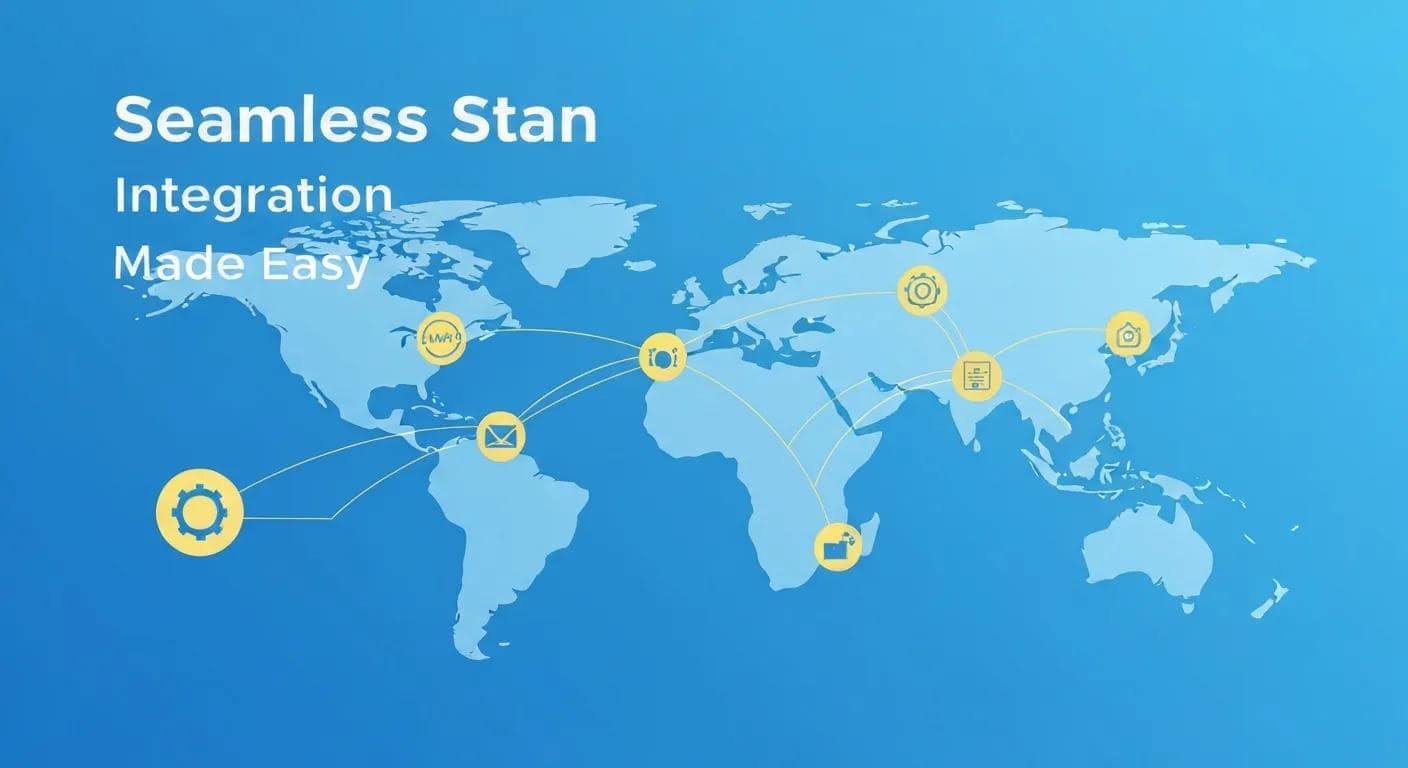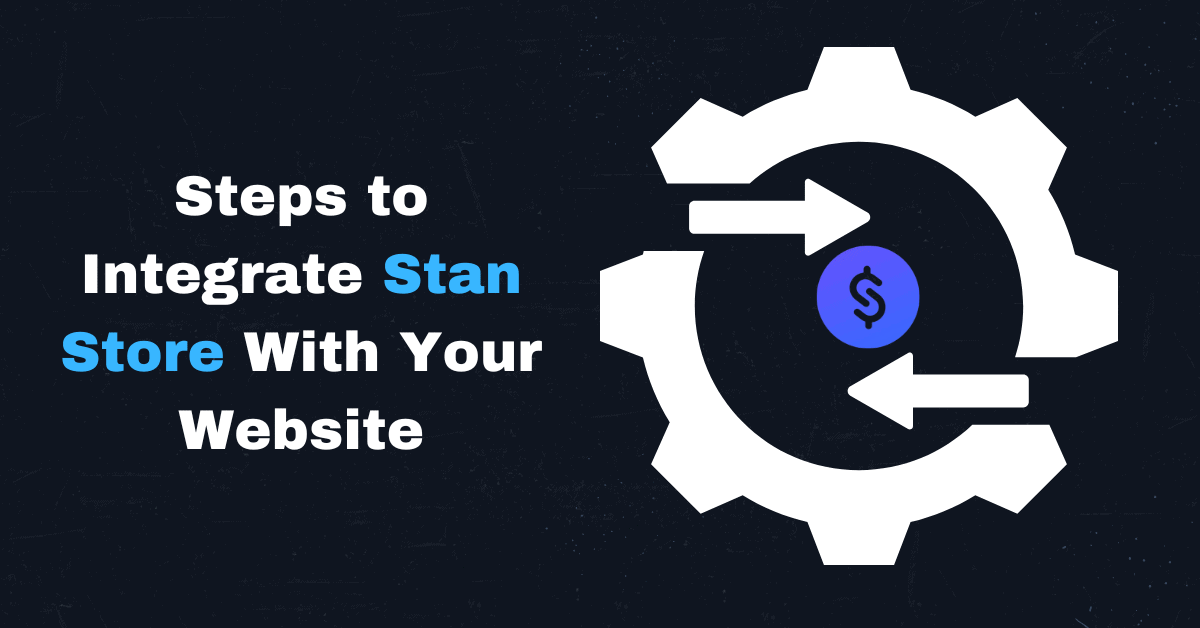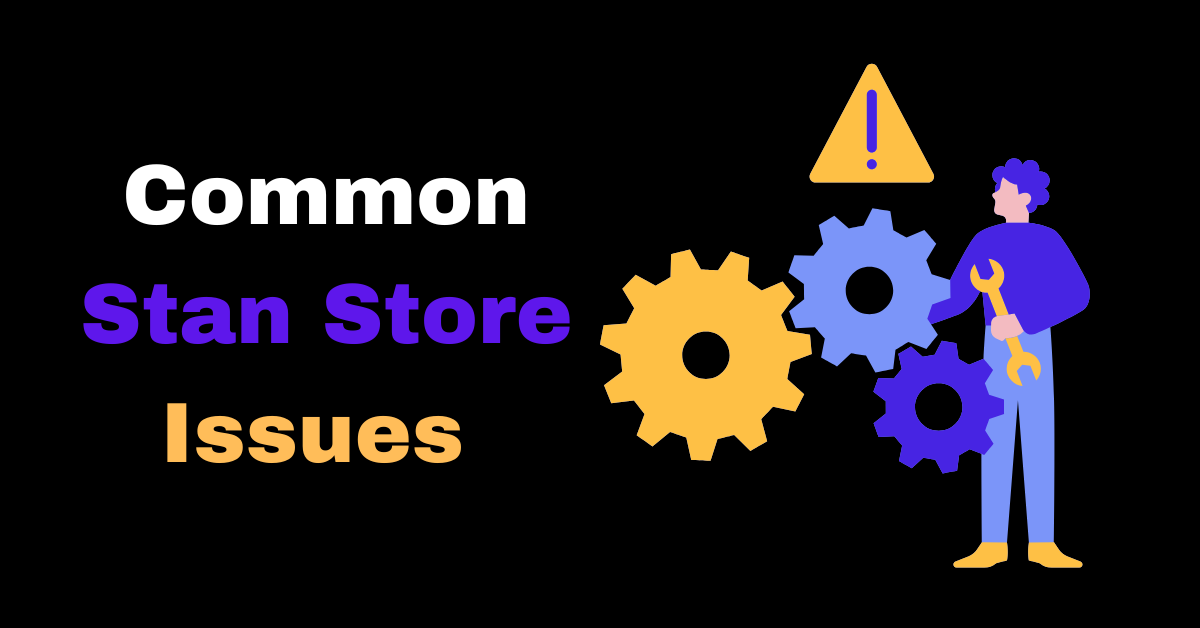If you’re a creator, coach, or anyone selling digital products, Stan Store is an all-in-one platform that simplifies selling ebooks, courses, and consultations. Many creators struggle with converting followers into buyers due to clunky checkout processes or scattered products.
This guide provides no-code methods to integrate Stan Store into existing websites, offering practical tips to simplify sales and boost conversions without needing a developer.
What is Stan Store and Why Integrate It with Your Website?
Stan Store functions as your personal digital storefront, built specifically for creators. It handles product listings and payment processing, eliminating the need for a full e-commerce setup.
Its public storefront link and embed code connect products directly to your site, streamlining the buying journey and increasing sales.
Stan Store excels as a no-code platform, providing simple links and embed tools easily integrated into websites via buttons, menus, or code blocks. This approach is ideal for creators without developer resources, enabling rapid launch of storefront pages and immediate payment acceptance.
Top Benefits of Stan Store Integration:
- Faster Time to Market: Set up products and publish links in minutes.
- Centralized Product Management: Manage all listings, pricing, and delivery from one dashboard.
- Simplified Checkout Flow: Streamlined purchase process increases conversions and reduces abandoned carts.
Turning Website Traffic and Social Media Followers into Buyers with Stan Store
Stan Store effectively converts attention into revenue by centralizing product offerings across social bios, posts, and website calls-to-action (CTAs). This “funnel compression” reduces clicks and redirects, optimizing the checkout process for digital delivery and leading to higher conversion rates.
For example, an ebook can be sold directly from a blog post CTA, or a consultation booking link promoted across Instagram and a website header, all directing traffic to a single, optimized storefront. This simplifies sales tracking, identifying effective marketing efforts.
No-Code Ways to Add Stan Store to Your Website

Adding Stan Store to an existing site without coding typically involves three main options: a simple link-in-bio or URL placement, embedding the storefront or a specific product, or pointing a custom domain for a branded look.
Each method balances setup time, integration depth, and technical complexity, depending on your brand and user experience goals. The following comparison helps in deciding:
| Integration Approach | Typical Setup Time | Best Use Case | Pros / Cons |
|---|---|---|---|
| Link-in-Bio / URL | 5–15 minutes | Quick promotion from social or navigation | Pros: Fast, universal. Cons: External experience, less seamless. |
| Embed (iframe / code block) | 10–30 minutes | Seamless storefront preview on product pages | Pros: Integrated feel. Cons: Depends on builder support and responsiveness. |
| Custom Domain | 30–60 minutes | Brand-aligned storefront for repeat customers | Pros: Full brand control. Cons: DNS steps required; slight technical steps. |
1. Link-in-Bio Method:
Place your public Stan Store URL in visible spots like navigation menus, hero buttons, and content CTAs. Copy the storefront URL from your dashboard and add it to a button, menu item, or text link using your website builder. Use direct action phrases like “Buy Course” or “Shop My Templates.” Always test the link in a private browser to ensure a smooth checkout flow. This is the lowest-friction option and a reliable fallback.
- Copy your Stan Store public URL from your dashboard.
- Add a Button or Menu Link in your site editor and paste the URL.
- Label the CTA Clearly with action-oriented text and test the flow.
2. Embedding Stan Store:
Embedding Stan Store uses a code block or embed widget from your website builder. Paste the storefront snippet or iframe provided by Stan Store to display a storefront preview directly on your page. Ensure the iframe has responsive attributes and test on mobile.
If embedding is problematic, revert to a link-based CTA.
- Embed in Code Block: Paste the embed snippet and adjust height/width for responsiveness.
- Use Platform-Specific Widgets: If your builder has an embed widget, use it for easier styling.
- Fallback Option: If embedding fails, use a button linking to the storefront.
3. Connecting a Custom Domain:
Connecting a custom domain or subdomain to Stan Store requires adjusting DNS settings at your domain registrar. This ensures your storefront appears under your own brand. Create a CNAME or A record as per Stan Store’s instructions, then verify the domain in your Stan Store settings.
The platform typically handles SSL. Allow time for DNS propagation and confirm SSL is active before promotion.
- Decide on a subdomain or domain (e.g., shop.yoursite.com).
- Update DNS record at your registrar as instructed by Stan Store.
- Verify and wait for propagation, then test checkout on the custom domain.
Integrating Stan Store with Popular Website Builders (No Tech Skills Needed!)
Integrating Stan Store with popular website builders primarily uses native blocks or widgets for links and code blocks for embeds. The process involves placing, labeling, and testing, leveraging existing editor functions without needing to write code. Steps vary slightly by platform.
WordPress:
On WordPress (Gutenberg, Classic, Elementor), use a Button block for direct links or a Custom Code block for embeds. In Gutenberg, add a Button block, paste your Stan Store URL, and style it. For embeds, add a Custom Code block and paste the iframe snippet.
Elementor users can use Button or Code widgets, checking mobile settings. Always preview changes and clear caching plugins before testing.
- Gutenberg: Add Button block + link or Custom Code for iframe.
- Elementor: Use Button widget or Code widget; check responsive settings.
- Classic Editor: Insert link into a text/block or embed iframe into Text mode.
Squarespace:
For Squarespace, use Button blocks for links or Code Blocks for embeds, considering template placement for visibility. Insert a Button block and paste the storefront URL, or insert a Code Block for an in-page storefront preview. Use the mobile preview tool to confirm CTA placement and spacing.
If Code Blocks are restricted, use a prominent button in the header or a dedicated section.
- Button block: Great for navigation or hero CTAs.
- Code Block: Use for full embed; always test across templates.
- Template tricks: Summary Blocks or Announcement Bars can be good alternatives for visibility.
Wix:
Wix’s editor offers Button elements for direct links and an Embed Code element for iframe code, supporting both link-based and embedded storefronts. Drag a Button element, set the link to the Stan Store URL, and add clear CTA text. Alternatively, add the Embed Code element and paste the snippet.
For Wix ADI, use editor’s link settings or contact support for embeds. Adjust the mobile editor separately for optimal display.
- Wix Editor: Add Button > set link to storefront or use Embed Code for iframe.
- Wix ADI: Use site settings to add a link or contact support for embed concerns.
- Mobile Editor: Adjust mobile layout independently to ensure tap targets are reachable.
Shopify:
Stan Store integrates well with Shopify, especially for link-based storefronts or hybrid setups (Shopify for physical goods, Stan Store for digital). Integrate Stan Store links into Shopify menus, blog posts, or product descriptions. Use redirects for digital product checkouts.
This allows leveraging both platforms’ strengths without complex app installations, enabling quick offer testing and digital-only sales while maintaining the main Shopify store.
- Link-based: Place Stan Store URL in navigation or product descriptions.
- Hybrid: Use Stan Store for digital items while Shopify handles physical goods.
- Redirects: Use simple redirects for campaign-specific landing pages.
Best Practices for Optimizing Stan Store Integration for Conversions
Optimizing Stan Store integration for conversions involves clear CTA clarity, visual consistency, and a mobile-first layout. These elements impact brand perception, trust, and purchase decisions. Conversion design focuses on concise text and prime placement to reduce friction.
Matching site styles with Stan Store maintains brand trust. Here are top recommendations and a table comparing CTA placements:
| CTA Location | Expected Visibility | Recommended Label | Mobile Notes |
|---|---|---|---|
| Header / Top Navigation | Very high | “Shop” / “Book Now” | Keep concise; sticky header helps on mobile |
| Hero/Above-the-fold | High | “Get the Course” / “Start Learning” | Use a single, prominent CTA for clarity |
| In-content / Blog CTAs | Medium | “Download Now” / “Buy Ebook” | Place within first two paragraphs for article readers |
| Footer / Secondary | Low | “See All Products” | Useful as fallback; avoid primary messaging here |
1. Position Links and Buttons for Maximum Visibility:
Position Stan Store CTAs where visitors expect them: header navigation for constant access, hero sections for campaign landing pages, and inline CTAs in relevant blog posts. Align CTA labels with page context to improve click-through rates.
Use a primary CTA with a persuasive label and complementary secondary CTAs in sidebars or at article ends. Test different labels and positions to find what resonates with your audience.
- Header navigation: Provides persistent access from any page.
- Hero CTA: A single, focused action for campaign pages.
- Inline CTAs: Contextual prompts within content to capture motivated readers.
2. Prioritize Mobile Responsiveness:
Mobile responsiveness is critical, as most social and website traffic comes from phones. Embeds and CTAs must be clean, easy to tap, and ensure a smooth checkout. Usable design includes responsive iframes, correct viewport settings, and readable button sizes.
A mobile testing checklist should cover embed scaling, button spacing, and checkout form layout. Prioritize one-touch checkout and minimize required fields to reduce mobile friction and increase completion rates.
- Test embed scaling and viewport settings to ensure the storefront fits typical phone widths.
- Verify CTA tap targets are large enough and spaced to prevent accidental clicks.
- Simplify checkout fields and ensure keyboard types match field expectations.
3. Customize for a Seamless Website Look:
Customize Stan Store elements—colors, fonts, imagery—to mirror your website for a seamless transition and maintained brand trust. Visual continuity involves matching hero images, consistent CTA color accents, and similar product photos.
Simple checks include using the same hero image on landing page and storefront, matching CTA colors to brand primary color, and aligning tone and product descriptions. Perform a test purchase to validate the full experience.
- Match CTA colors and typography for brand consistency.
- Use consistent imagery and product copy between your site and storefront.
- Perform test purchases to validate the full experience.
Troubleshooting Common Stan Store Integration Issues
Common integration issues include broken links, non-displaying embeds, and slow load times. Diagnosing and fixing these involves straightforward checks and fallback strategies.
My troubleshooting method is elimination: confirm likely causes (URL accuracy, block permissions, caching) and apply targeted fixes. This section provides practical checklists and quick fixes to minimize storefront downtime.
1. Resolve Broken Links or Display Problems:
Verify the Stan Store public URL in an incognito window to ensure it’s correct and active. Confirm your site’s menu or button uses that exact URL, checking for spaces or redirects. Test across browsers and devices. Check for site-level security rules. If caching is used, clear the cache and republish.
If an embed fails, temporarily replace it with a link-based CTA while debugging. These steps usually resolve most link and display problems.
- Verify the public URL in a private browser tab.
- Clear site caches and re-publish the page after edits.
- Use a link fallback if embed rendering fails.
2. What to Do If Embed Code Doesn’t Work:
If an embed code isn’t rendering, first check if your builder allows iframes or custom code blocks in that specific page area; many restrict custom code or require a paid plan. Try moving the embed to a different block or page where custom code is allowed.
If the builder completely disallows embeds, revert to a link-based CTA or use a supported third-party embed widget. Clear caches and preview changes after each attempt.
- Check builder block permissions for custom code or iframe support.
- Try a different page area or widget where embeds are allowed.
- Use link fallback if embeds remain unsupported.
3. Ensure Quick and Smooth Loading:
To ensure fast loading, avoid embedding heavy assets on high-traffic pages; prefer link-based CTAs where speed is critical. Use lazy-loading strategies if supported, so embeds load only when visible. Reduce initial page load and defer non-critical resources for perceived performance.
Optimize images, limit third-party scripts near embeds, and use page speed tools to identify bottlenecks. If an embed significantly slows a page, switch to a prominent link until performance issues are resolved.
- Defer embed loading or use lazy-load options.
- Optimize surrounding assets and reduce third-party scripts.
- Test with performance tools and prioritize fixes that lower Time to Interactive.
Maximizing Stan Store’s Potential Beyond Basic Website Integration
Beyond basic integration, maximizing Stan Store involves using advanced features like bundles, subscriptions, analytics tracking, and third-party integrations. This boosts average order value, creates recurring revenue, and provides customer behavior insights.
Product and data optimization—packaging complementary offerings, setting up subscriptions, and using UTM tracking—increases long-term revenue potential. The storefront can test pricing, offer limited-time bundles, and track outcomes to refine product-market fit.
1. Advanced Features to Enhance Sales:
Advanced features boosting sales include product bundles for increased average order value, subscription billing for predictable recurring revenue, and analytics for understanding conversions and traffic sources. Bundles encourage larger purchases, subscriptions foster loyal customers, and analytics pinpoint effective CTAs.
These features allow experimentation with packaging and pricing without technical hassle, leading to data-informed scaling.
- Bundles: Combine complementary items to increase order size.
- Subscriptions: Offer recurring access for stable revenue.
- Analytics: Track UTM parameters and conversion flows to iterate.
2. Selling Various Digital Products and Services:
Stan Store supports various digital products: ebooks, online courses, templates, and consulting sessions, each with simple delivery options (instant download, course access, booking details).
Configure the product in the dashboard with the correct delivery method, set pricing, and place the link or embed where visitors will see it. Experiment with promotional bundles and introductory discounts. Always test purchases and ensure clear product descriptions for buyer satisfaction.
- Ebooks & downloads: Deliver via immediate download links after purchase.
- Courses: Provide access links or gated content after checkout.
- Services: Use booking links or manual follow-up to confirm sessions.
3. Linking Stan Store With Social Media:
Link Stan Store to social channels by placing the URL in bios, promoting in posts and stories, and using link-in-bio aggregators or campaign-specific landing pages. A single storefront link reduces confusion and centralizes conversions. UTM tagging and campaign links measure social post effectiveness.
Use story links, pinned posts, and consistent CTA language across platforms to reinforce offers. Track results in analytics to double down on high-converting formats.
- Add Stan Store URL to bios and pinned profile spots.
- Promote specific offers with UTM-tagged links for tracking.
- Use consistent CTA text across posts and stories for clarity.
Conclusion
Integrating Stan Store into your website has been a game-changer for monetizing digital products, enhancing user experience, and boosting conversion rates.
By simplifying checkout and centralizing product management, creators can focus more on content and marketing. Explore Stan Store to transform audience engagement into real revenue.
Get expert help driving more visibility to your Stanstore Today. Talk to Us!






